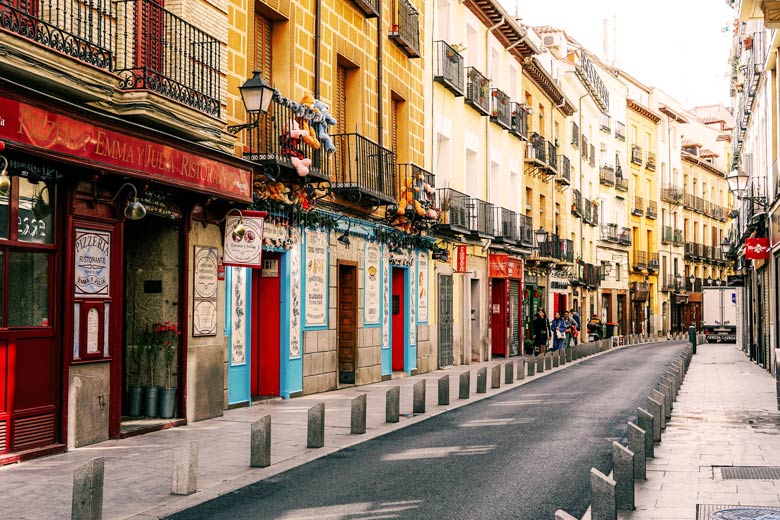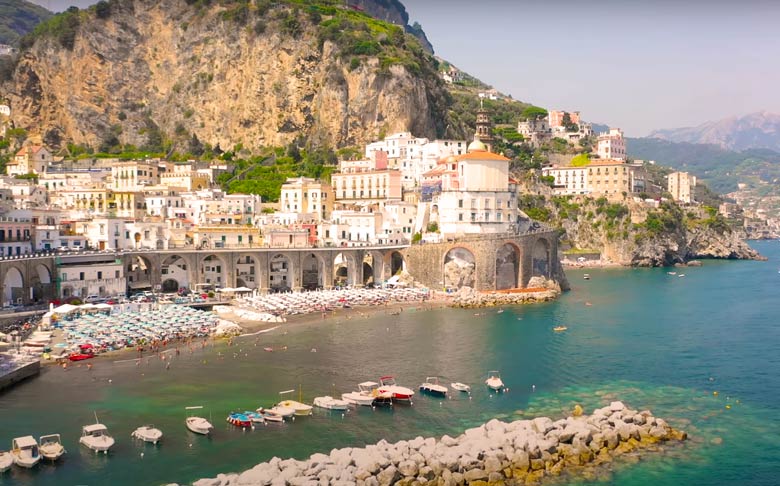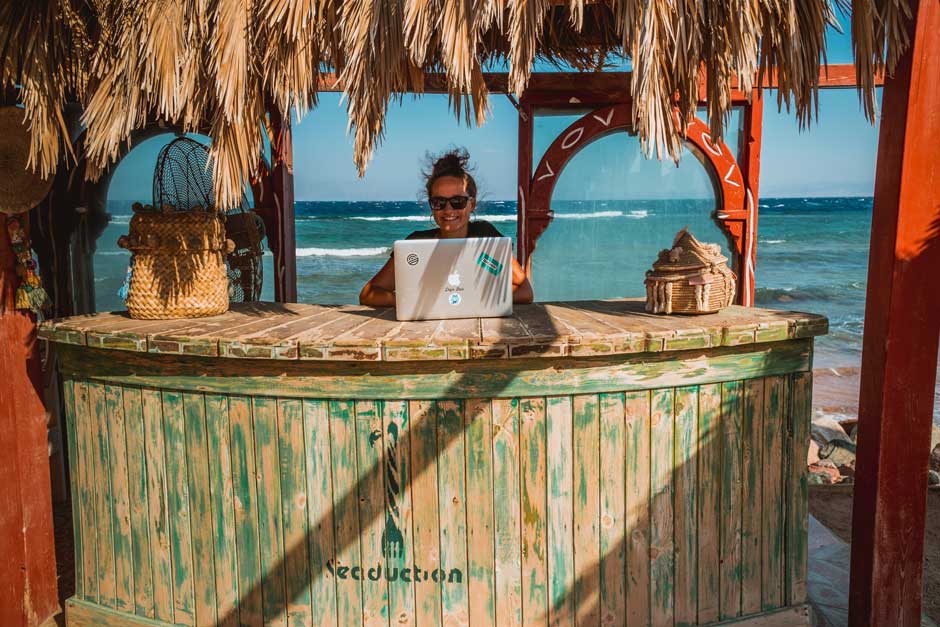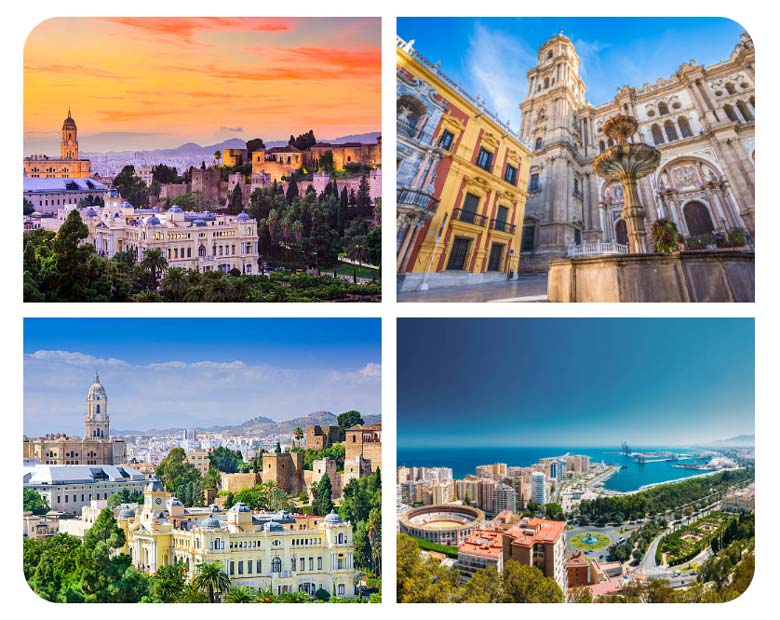Malaga, the port city of Andalusia, is the 6th largest city in Spain and the centre of the Costa Del Sol. With a population of 570,000, Malaga is a popular tourist destination for its good gastronomic experiences, its wines, its mild climate and its many hours of sunshine. In addition to the beaches and sunshine, the city offers architectural attractions, interesting museums and excursions, as well as a nightlife that is also significant.
Malaga’s sights and beaches are truly beautiful, and the surrounding Costa del Sol also provides beautiful and unique excursions and large sandy beaches on a European scale. The city’s attractions are not as many as Barcelona or Madrid, but its beaches and the Costa del Sol’s excursion opportunities make it a much calmer and quieter, and therefore interesting travel destination. For more information on holiday destinations, excursions and transport options around Malaga, visit our Costa del Sol page.
And remember, Malaga can be visited at any time of the year, but the best time to visit is in spring and autumn, when the tourists disappear but the sunshine is still plentiful! Discover the beauty of Malaga and the Costa del Sol for yourself!
Experience the best of Malaga
Malaga was admired by the Phoenicians in ancient times, who were the first to found a city here, called “Malaka”. Then came the Romans, then the Moors, who made it an important commercial centre. To this day, many buildings still bear traces of the Moors. But did you know that Malaga was not only the birthplace of the Moors, but also of Picasso and Antonio Banderas? Picasso only lived here until he was 10, but he was born here.
Whether it’s accommodation or attractions, Malaga has it all! Below you’ll find all the best things to do and see, but even better, you can book accommodation at the best prices and with the widest choice. And at the end, you’ll also find tips and information on getting around the city and getting to the airport.
Malaga accommodation
Why search for accommodation on several websites when you can find the best one quickly and easily on a single interface? Here you can choose from the most popular offers, from hostels and apartments to hotels. You’ll get the biggest selection, guaranteed the best prices, and accommodation you won’t find on other sites. This saves you a lot of time and money and guarantees you the best accommodation for your needs. Why not take advantage of this opportunity?
Did You Know?
Alcazaba
The Alcazaba is a real treasure in Malaga! It was built in the 8th century, but many parts date back to the 11th century. The Alcazaba was the palace of the city’s leaders and is one of the best-preserved Moorish fortifications in Spain. The fortress once consisted of over 100 towers and three palaces, and was protected by three walls.
Are the walls of the fortress still standing? Yes, two walls are still standing! The Alcazaba has stunning architecture, beautiful gardens and breathtaking views of the sea and the city. One of the most important attractions of the city.
At the entrance to the Alcazaba you’ll find the remains of a Roman amphitheatre from the 1st century BC, which is free to visit! And did you know that some parts of the amphitheatre were used to build the Alcazaba?
Entrance fee: €3.50, students and over 65s €1.50. Free for everyone after 14:00 on Sundays (last admission 17:15). You can also buy a combined ticket to visit the Alcazaba and the Gibralfaro fortresses: €5.50.
Opening hours: from April to October from 9:00 to 20:00, from November to March from 9:00 to 18:00. Closed 1 January, 24, 25 and 31 December.
Ready to discover the Alcazaba? Discover this royal fortress in the heart of the city!
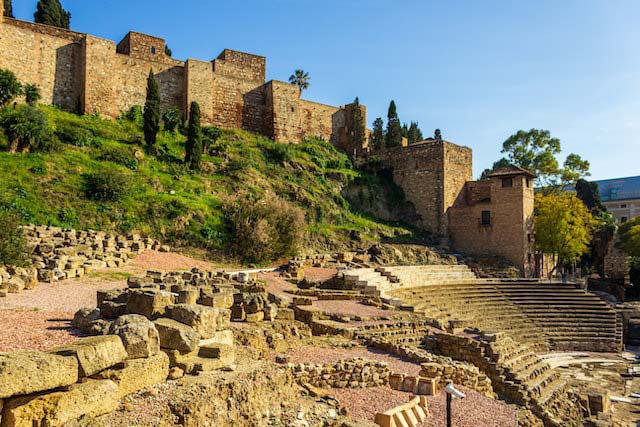
Gibralfaro Castle
You don’t have to go far to get stunning views of the city and the sea, Gibralfaro Castle is the place to do it! Perched 130 metres above the Alcazaba, you’ll be treated to a breathtaking panorama. But why visit here?
First and foremost, the setting is stunning and the views are spectacular. Everything from the bullring to the harbour to the sea can be seen if you walk around above your head. And if that wasn’t enough, you can discover more beauty on the side overlooking the mountains.
The site of the castle was once occupied by a lighthouse in Phoenicia, but this is now replaced by the castle built in 929. It was also famous for a 14th century siege when the Malagasy fought against their Catholic rulers. The siege ultimately led to the fall of the Malaga when hunger prevailed.
But how do you get to Gibralfaro Castle? If you prefer the experience of walking, you can get there on foot from the Alcazaba in 15-20 minutes, or if convenience is important, you can get there from the Plaza del General Torrijos either by bus 35, which leaves from near the port, or by tourist bus.
Entrance ticket: 3,50 EUR. 1,50 EUR for students and over 65s. Free for all after 14:00 on Sundays (last entry at 17:15). Combined ticket Alcazaba-Gibralfaro: 5,50 EUR.
Opening hours: April-October: 9:00-20:00, November-March: 9:00-18:00
La Manquita Cathedral – the one-armed princess
In the centre of the city, in the old part of town, you will find this cathedral of stunning beauty, 84 metres high. Its construction lasted from 1528 to 1782, and although it’s charming inside and out, it has a sadness about it. Why? Because it was planned to have two towers, but only one was built. That’s how it got the name ‘La Manquita’, which means ‘one-armed lady’ in Spanish.
La Manquita, like La Sagrada Familia in Barcelona, remains unfinished, but you certainly won’t be bored during your visit!
Entrance fee: church: 6 EUR, with free audioguide. Students aged 18-25 EUR 4. 13-17 EUR 3. Over 65 EUR 5.50. Under 13 free. Free admission for everyone Monday-Thursday 9:00-10:00 (including the roof). Church + roof: 10 / 7 / 6 / 9 EUR. Roof only: 6 / 4 / 3 / 5,50 EUR.
Opening hours: Monday-Saturday 10:00-18:00, Sunday 14:00-18:00. Closed: 25 December, 1 January.

La Manquita Cathedral
The favourite of Malaga’s party-goers: Plaza de la Merced
All you have to do is visit Plaza de la Merced to see why young people love it so much. Under the lights of the night, there’s a great atmosphere where young people meet up with a glass in hand, chatting before hitting the dance floor. In addition to the nightlife, Plaza de la Merced is also home to a number of cafés, restaurants and cocktail bars, so you can even relax here. And did you know that this is also the birthplace of Picasso?
On the main street, where the action is always on Calle Larios
The most famous pedestrian street in the city, Calle Marqués de Larios is always full of people passing by the countless restaurants, cafés and shops. The street is a great place to shop for great products, but it’s also an opportunity to just sit in a café and watch the passers-by while you get a taste of the authentic Spanish lifestyle. The street is one of the most beautiful shopping streets in Spain and not to be missed!
Mercado de Atarazanas
The Mercado de Atarazanas is truly one of the best markets in Andalusia, where fish, meat, cheese, vegetables, fruit, beer and wine are always fantastically fresh, of the highest quality and at the best possible prices. Authentic local flavours can also be sampled in the cozy market’s eateries. The Atarazanas market is located by the river, close to Malaga’s main street, and its building, inspired by old Moorish buildings, is also remarkable. Don’t miss this great Mediterranean market, open from 9am to 2pm Monday to Saturday.
Picasso’s Birthplace and the Picasso Museum
The Picasso Museum exhibits paintings, drawings and sculptures from the artist’s various periods (Palacio de Buenavista San Agustin 8)
Or are you more interested in Picasso’s birthplace? That’s also a great choice, especially if you’re interested in learning about the family’s history. It’s free to visit on Sundays, and also on 28 February, 18 May, 27 September and 25 October. The Picasso museum will also be free during the last two hours of opening on Sundays and always for children under 16 (15 Plaza de la Merced).
Picasso Museum opening hours. Closed: 25 December, 1 January, 6 January. Open until 15:00 only: 24 December, 31 December.
Admission: 8-12 EUR (6-9 EUR for over 65s).
Picasso’s Birthplace open: every day 9:30-20:00 (24 and 31 December until 15:00), closed: 1 January, 25 December.
Entrance fee: 3 EUR (2 EUR for students aged 18-26 and over 65)
La Malagueta bullfighting arena
La Malagueta Bullring, built in 1874, can seat up to 14,000 spectators at a time! But how was it that the first bullfight was held in 1876? The arena is very old indeed, and has been visited by Madonna, as one of her music videos was filmed there.
Today, the Centro Cultural La Malagueta is open to the public free of charge from 11:00 to 14:00 and 17:00 to 20:00, Monday to Saturday. The arena bullfights are held only in April and August, and a few other dates, mainly in spring and summer.
Curious about the dates of their next bullfights? You can check out the dates here: bullfights, and you can also buy tickets here, but if you want to do it in person, you can also get them at the bullfight arena ticket office!

The Malaga Glass and Crystal Museum, or “Museo del Vidrio y Cristal”
Is there anyone who is a glass and crystal enthusiast? If so, then the “Museo del Vidrio y Cristal” in Malaga is the place for you! Since it opened its doors in 2009, this museum has become one of the most popular museums in Malaga. No other place has been so praised by visitors!
With 700 glass and crystal objects, this museum spans from Egyptian, Roman times to the present day. The museum is housed in a beautifully restored 18th century castle. But what’s the best part? The fact that you can not only admire the exhibits, but also experience them in their original, period setting! For example, you can see a 19th century glass object alongside period furniture, mirrors, porcelain, paintings and lamps.
The entrance fee is €7 (€5 for children aged 7-12 and over 65, free for children under 7) and includes a guided tour. The interesting guided tour (not in Hungarian), with a lot of history and curiosities, adds to the great experience.
The museum is open Tuesday to Sunday from 11:00 to 19:00 (closed on Mondays, 1 January, 6 January, 25 December and throughout August), at Plazuela Santisimo Cristo de la Sangre, 2
The Museo Automovilistico De Malaga
And if you’re a car enthusiast, you don’t have to miss out on some relaxation at one of Malaga’s museums! The “Museo Automovilistico De Malaga” is a museum that displays both old and new cars. Here you can see more than 90 beautifully maintained cars from 1898 to the present day.
There are informative descriptions of the history of the cars in English and Spanish, but it’s not just car enthusiasts who will be interested. In addition to the cars, the fashions of the time are also presented! This is a great museum that will appeal to both men and women.
Admission is 9.50 EUR, over 65s 7 EUR, students 5 EUR, under 3s free. The museum is accessible from the city centre by bus No 7, No 15, Avda. Get off at the bus stop Sor Teresa Prat (Tabacalera). Or take metro L2: Princesa – Huelin station, then walk 900 metres.
Opening hours: every day 10:00-14:30 and 16:00-19:00. Closed: 1 January and 25 December. Only open until 14:00: 24 and 31 December.
These two museums are just a few examples of the diversity of museums in Malaga. Who says museums are boring?
Centro de Arte Contemporáneo de Málaga (CAC)
Malaga has a must-visit venue for modern art lovers, the Centro de Arte Contemporáneo de Málaga (CAC). Whatever your style, there is something for everyone, from paintings to prints and sculptures.
But why call this place a ‘treasure trove of modern intellectuals’? Because here you can discover interesting, sometimes astonishing or even strange works from the 1950s onwards! And one of the best things about it is that you don’t have to pay, because admission is free.
The CAC is located on Calle Alemania. I’d just recommend not planning to come on a Monday, as it’s closed on that day, except for the 3rd Monday of the month. On the other days, it is open from 9:00 to 21:30 on 1 September to 29 June and from 9:14:00 and 17:00 to 21:30 on 30 June to 31 August. However, on some holidays of the year, such as 1 January, 6 January and 25 December, it is closed.
The Museo Aeronáutico de Málaga
Really good fun for aviation fans! The Museo Aeronáutico de Málaga is Spain’s national museum of aviation and airports. Small, but so much more! With 3,000 m2 of indoor exhibition space and 4,000 m2 of outdoor exhibition space, you can see 9 historic aircraft, as well as exhibits related to Spain’s airports and aviation. Too bad you can’t get into all of them, but you can get into a DC-9!
It shouldn’t be hard to find, you can get there the same way you get to the airport, by bus A or train C1. It is located at Av. del Comandante García Morato, s/n, 29004, next to the general aviation building. Admission is free and opening hours are Tuesday 10:00-20:00, Wednesday-Saturday 10:00-14:00.
Museo Carmen Thyssen Málaga
Then, while you’re here, why not visit the Museo Carmen Thyssen Málaga? Here you can admire the private collection of Carmen Cervera, the 5th wife of Hans Heinrich Thyssen-Bornemisza.
The emphasis is on Spanish painting from the 19th and early 20th centuries, with a particular focus on works by Andalusian artists. Among the artists on display are Zurbaran, Sorolla,
Zuloaga and Romero Torres. The permanent collection contains 230 works and is an excellent programme for art and museum lovers.
The Museo Carmen Thyssen Málaga is located in Plaza Carmen Thyssen – C/Compañía, 10.
Entrance fee is 10 EUR (from 14:30 to 16:00 6 EUR), 18-25 years old and over 65 years old 6 EUR, under 18 years free.
Opening hours: Tuesday to Sunday 10:00-20:00, closed on Mondays, 25 December, 1 January and 6 January.
Kelipe Centro de Arte Flamenco and Liceo Flamenco
Great flamenco experiences in Seville!
Want to see some truly authentic Spanish flamenco? Then the Kelipe Centro de Arte Flamenco, located at Calle Muro de Puerta Nueva, number 10, is the place for you! We guarantee a real music, dance and tapas experience that will give you a true, traditional Spanish experience. The show starts at 21:30 on Thursday, Friday and Saturday, it’s worth booking your tickets in advance! Admission is 30 EUR, which includes a drink. 12-18 year olds 20 EUR, children under 12 10 EUR and children under 6 free.
Another great flamenco venue is the Liceo Flamenco on Calle Beatas, 21. Open Thursday to Saturday from 20:00-23:00, with the flamenco show starting at 20:30. In both places, you will definitely not see a ‘cheesy’ show put together for tourists, but real, authentic, high quality Spanish flamenco, traditional and full of artistic flair.
La Concepción Botanical Garden
Looking for a bit of peace and quiet and plant life? Then don’t miss La Concepción Botanical Garden! Established in 1855, the beautiful garden is filled with exotic plants, palms, ponds and Roman sculptures. Address. The entrance fee is EUR 5.20, EUR 3.10 for students under 27, under 16 and pensioners, and free for children under 6. Free for everyone on Sundays from 1 October to 31 March from 14:00 to 17:30 and from 1 April to 30 September from 16:30 to 20:30. Open Tuesday-Sunday from 1 April to 30 September 9:30-20:30, and Tuesday-Sunday from 1 October to 31 March 9:30-17:30. Closed: every Monday, 25 December and 1 January.
Malaga Park
In Malaga Park, you can take a leisurely stroll among the palm trees and enjoy the tropical surroundings. On hot summer days you don’t have to worry about getting sunburnt, the park provides plenty of shade and it’s great to cool off.
Malaga beaches, beaches in and around Malaga
Playa de Malagueta beach
The most famous and popular urban beach is Playa de Malagueta, which is easily accessible on foot from the city centre. Locals and tourists alike love this sandy, man-made beach, which is filled with sand brought from the Sahara. Because it is so popular, it is not necessarily the most crowded and cleanest beach in summer. Nevertheless, the palm trees and the beautiful promenade make it a charming place. The beach is 1.2 km long and 45 m wide, with plenty of food, drinks, a playground and a shop. Umbrellas and sunbeds can be rented.
La Caleta beach
La Caleta beach is just east of Playa de Malagueta, right next to it and close to the town centre. The two beaches are connected by a beautiful promenade along the beach. There are no boundaries between the two beaches, but there are fewer people here. The beach is 1000 metres long and 25 metres wide. Umbrellas and sunbeds can be rented here.
Banos del Carmen beach
The Banos del Carmen beach is located east of La Caleta beach and west of Pedregalejo beach, is rocky and pebbly and very popular with young people. The 550m long, 5m wide bay beach is not the most beautiful, but is popular with topless sunbathers. One of the best places in Malaga to enjoy the sunset.
Las Acacias beach
East of Banos del Carmen is Pedregalejo, also known as Las Acacias beach. One of the most popular beaches in the city, it is 1200 metres long and 20 metres wide, sandy and surrounded by lots of good restaurants and bars. There are also four coves so that everyone can find a spot to their liking! And if you’re looking for a party, you can hit the beachside bars and clubs in the evening! If you want to enjoy the summer, this is the place for you! This beach is well equipped, clean and has lots of facilities such as toilets, showers, playgrounds, sports fields, umbrellas and sunbeds! And how do we get here? Take bus number 3 to the Bolivia (Pedregalejo) stop!
Playa del Palo beach
If you keep walking east, you will arrive at Playa del Palo beach. It’s a great family beach with four semicircular sandy bays, playgrounds, showers and toilets. You will also find restaurants and bars. The beach is 1200 metres wide and 25 metres long, and it deepens slowly, so it’s a great option for families with young children. How do we get here? Take bus 3 or 11 from Avda. Juan Sebastian Elcano (Echeverria) stop!
Peñón del Cuervo beach
Peñón del Cuervo beach is just east of Playa del Palo. The famous rock, which is in the sea and close to the beach, gives it its name. Access is not easy, but it is also an advantage because it is not crowded. Its facilities and services are not first class, but if you are coming by car, you can easily find parking at this beach. The beach is 450 metres long and 25 metres wide.
Campo de Golf beach
From the westernmost beach in Malaga, move to the easternmost beach and explore the beaches east of the city centre, then move southwest to the beaches. The “Campo de Golf” is a quiet, peaceful beach, popular with naturists and surfers, but not at all crowded. It’s big, about 2250 metres long and 50 metres wide, so you never have to worry about lack of space. It takes its name from the golf course next to it. You can find it 750 metres from bus stop 5 and 1.2 km from the C1 commuter train stop.
Guadalmar beach
A step to the north-east, closer to the city centre, is Guadalmar beach, Malaga’s official nudist beach. But not only that – it’s also a popular LGBT beach. It welcomes locals, families and the LGTB community. 400 metres long and 30 metres wide, it’s not overcrowded, but the noise from the airport means it’s not entirely peaceful. Bus 5 is easily accessible to the Rogelio Oliva (Hotel Guadalmar) stop.
Misericordia beach
Another step northeast, closer to the city centre, you’ll find Playa de la Misericordia beach. The 1500-metre long, 30-metre wide sandy beach is popular with families and young people alike.
Playgrounds, sports fields and restaurants are also part of the facilities. It is known for its 2 chimneys and also for the ‘Ola del Melillero’ (the Melillero wave), a sudden, short-lived rise in the water level with large waves that can catch sunbathers near the beach by surprise. The only way to avoid it is to carry your towel a little higher up, but don’t be alarmed, it only happens once a day, depending on your schedule.
Along with Malagueta and Pedregalejo, Misericordia is also one of the coolest beaches in town, and if you’re looking for a quieter spot, this is the place to be. Metro 2 is 1.5 km from the La Luz – La Paz stop, and buses 7, 15 and 40 stop close to the beach.
There are excellent beaches on the Costa del Sol, many Malagasy also visit e.g. the great beaches of Torremolinos, or Nerja is particularly nice, Marbella, and the very good beaches of Fuengirola are also excellent places for swimming and sunbathing.
Places around Malaga, day trips
There’s nothing cooler than holiday rentals and excursions around Malaga! Party beaches, quiet places, exciting excursions await you. Ronda, the Caminito del Rey also offers some very unique scenery, but if you’re looking for an authentic Spanish town, Nerja is the place to be. And for partying, Puerto Banus is a must, where you can admire expensive yachts and sports cars. But it’s not all about partying: you can also visit aqua parks, zoos, theme parks, dolphinariums and even Gibraltar, where there’s plenty to see and do.
The Costa del Sol is simply great, there’s something for everyone! So what are you waiting for, get your swimsuit on and head to Malaga!
Read More:
Nusa Penida Island – Indonesia Travel Tips – Full Guide
Common Questions:
Q: What is Malaga best known for about?
A: Its beaches, its beautiful weather and its fine dining.
Q: Is 2 days in Málaga enough?
A: We would say not, but if that’s all you have, you can try to make the most of your time!
Q: Is Málaga a nice walking city?
A: Yes, there are plenty of sidewalks and pedestrian streets that are easy to walk around.
Q: Is it worth visiting Málaga?
A: We would say a definite YES! There is plenty to see and the atmosphere is wonderful.
Q: How can I spend a day in Málaga?
A: You could go to the beach, wander around the city, sample the local food and drink, and visit the museums and sights.
Q: Is Malaga a cheap city?
A: It’s definitely not a luxury metropolis, but if you want value for money you can find pretty good prices.
Q: What is the best month to visit Malaga?
A: The whole year is full of great times, but if you’re looking for warmth, July-August is the time when the sunshine is at its peak.
Q: Where can I walk in Malaga?
A: In the heart of the city you’ll find the central park, Calle Larios and the Mercado de Atarazanas, but the whole city is full of super pedestrian streets.
Q: What is the coldest month in Malaga?
A: January is when the wind is usually colder and humid.
Q: What is the hottest month in Malaga?
A: July to August is the hottest in summer, with temperatures reaching up to around 30 degrees Celsius.
Q: What is the wettest month in Spain?
A: Autumn is the wettest month, especially October-November, when it rains in the mountains.




